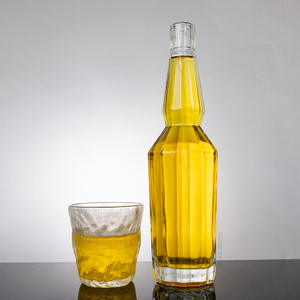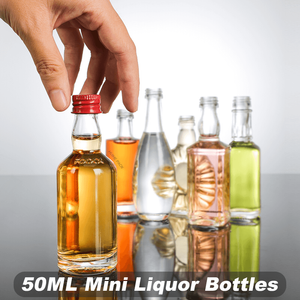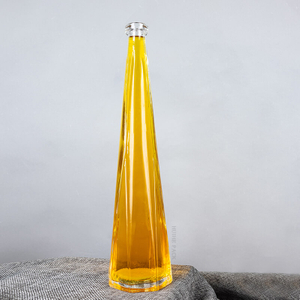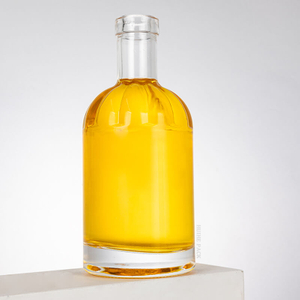Customized | Quality Control | Case | Blogs | Download | FAQ
Views: 0 Author: Site Editor Publish Time: 2025-10-14 Origin: Site
When sourcing glass bottles or liquor packaging online, it's common to see different units like mm, ml, oz, mil, and cc mixed together in product descriptions. For many international buyers, these abbreviations can look similar — but they actually measure very different things.
In the packaging world, mm (millimeter) usually refers to the dimensions of a bottle, such as height or neck diameter, while ml (milliliter) refers to capacity, or how much liquid the bottle holds. The confusion often leads to costly mistakes when placing orders or designing molds.
Quick reality check:
“750 ml ≠ 750 mm ≠ 750 mil.”
A 750 ml bottle with a 28 mm neck finish is totally different from a 28 ml vial—yet this type of mix-up happens more often than you might think. Understanding these measurement units clearly helps avoid production errors, mismatched caps, and miscommunication between buyers and suppliers.
At Huihe, we work with global clients every day who face these same challenges. This guide will help you understand the real difference between M, mm, ml, and mil, and how to use them correctly in glass bottle specifications.
Before choosing or designing a glass bottle, it's important to understand what each unit really means. These small letters—M, mm, ml, mil, oz, and cc—may look similar, but they describe completely different measurements used in packaging and production.
Here's a quick and simple overview:
Unit | Meaning | Used For | Example in Packaging |
M (Meter) | The base unit of length in the metric system. | Measuring large-scale dimensions. | Conveyor length: 1.2 m |
mm (Millimeter) | 1/1000 of a meter. Measures short distances. | Bottle height, diameter, or neck size. | Neck finish: 28 mm |
ml (Milliliter) | 1/1000 of a liter. Measures volume. | Bottle or jar capacity. | Liquor bottle: 750 ml |
cc (Cubic Centimeter) | Equal to 1 ml. Used in medical, cosmetic, or lab packaging. | Volume or container size. | Dropper bottle: 30 cc (same as 30 ml) |
oz (Fluid Ounce) | Common U.S. unit for liquid volume. 1 fl oz ≈ 29.57 ml. | Capacity for spirits, perfumes, or beverages. | Mini bottle: 1.7 fl oz (≈ 50 ml) |
mil | 1/1000 of an inch (≈ 0.0254 mm). Measures thickness. | Label film, liner, or coating thickness. | Cap liner: 5 mil thick |
In short:
M and mm are for length and size.
ml, oz, and cc are for volume or liquid capacity.
mil is for thickness.
Keeping these distinctions clear ensures you get the right bottle dimensions, matching closures, and accurate filling volumes for your products.
When it comes to bottle capacity, three common units are used across the packaging industry: milliliters (ml), fluid ounces (fl oz), and cubic centimeters (cc). These units all describe volume, but they are used differently depending on the region or industry.
Here's the simple rule:
1 ml = 1 cc (they are exactly the same)
1 fl oz ≈ 29.57 ml (U.S. fluid ounces)
So if you're converting between American and metric standards, you can use these numbers to quickly estimate bottle sizes.
| Unit | ≈ US fl oz | Typical Bottle | Market Nickname |
| 50 ml | 1.7 oz | Mini shooter | "Nip" – USA duty-free |
| 200 ml | 6.8 oz | Half-pint | "Flask" – EU travel retail |
| 375 ml | 12.7 oz | Half-bottle | "Demi" – Asian samplers |
| 500 ml | 16.9 oz | — | CIS standard vodka |
| 750 ml | 25.4 oz | Global spirit | "Fifth" – US liquor |
| 1,000 ml (1 L) | 33.8 oz | 1 L Magnum | Club & duty-free |
| 1,750 ml | 59.2 oz | Handle | US bar well |
In most of Europe and Asia, bottle capacities are listed in milliliters (ml) or liters (L), while the U.S. market commonly uses fluid ounces (oz). Both systems are correct—it's just a matter of local preference.
When reviewing international bottle catalogs or placing OEM orders, make sure you confirm which unit the supplier is using. A quick conversion check can prevent confusion about bottle size or filling volume.
Mix-up | What Happens | Real-World Result | Quick Save |
mm vs ml | Buyer reads “500” and thinks volume, but spec means height. | 500 mm tall bottle ordered—arrives holding 300 ml, caps don't fit neck. | Always pair unit with word: “500 ml fill / 280 mm tall”. |
cc vs ml | Purchaser sees 750 cc, assumes it's smaller than 750 ml. | None—they're identical. Still, U.S. buyers search “750 cc spirit bottle”, so list both on-page for SEO. | |
mil vs mm | Label vendor quotes 3 mil thickness; buyer wanted 3 mm. | Label arrives paper-thin, wrinkles in application. | Remember: 1 mil = 0.0254 mm. Quote both: “0.08 mm / 3 mil PET liner”. |
Height ≠ Capacity | Two “500 ml” bottles: one Bordeaux (high shoulder), one Nordic (flat). | Palletizing plan fails—cartons 30 mm too short. | Check overall height and fill point separately on the drawing. |
Take-away: Write every specification as “number + unit + what it describes”.
Example: “750 ml capacity, 28 mm neck, 1.8 mm wall, 290 mm height, 3 mil label stock.”
That single line stops 90 % of glass-bottle mismatches before money changes hands.
When choosing or customizing a glass bottle, understanding its main structural parameters is essential. Each measurement plays a role in how the bottle looks, feels, and performs during filling, labeling, and sealing. Below are the key dimensions you'll often see on technical drawings or product listings:
Parameter | Description | Common Unit |
Height | The total distance from the base to the top of the bottle. Determines shelf presence and packaging compatibility. | mm |
Diameter | The widest point of the bottle body. Affects stability, label size, and box design. | mm |
Wall Thickness | The thickness of the glass sidewall. Influences strength, weight, and durability. | mm |
Bottom Depth (Push-up) | The indentation at the base of the bottle, designed to add strength and stability, and to reduce contact with surfaces. | mm |
Neck Finish | The opening size and thread design where the closure fits. Often shown as a combination of diameter and thread code (e.g., 28/410). | mm / standard code |
Capacity | The total internal volume the bottle can hold when filled. Used for product labeling and filling accuracy. | ml / oz / cc |
These parameters work together to define both the functionality and aesthetics of your packaging. For instance, even if two bottles share the same capacity, their wall thickness or neck finish might differ — which affects how they pair with closures or pumps.
When working with a supplier like Huihe Packaging, always confirm these dimensions before ordering or creating molds. This ensures your chosen bottle not only looks right but also performs perfectly in your production line.
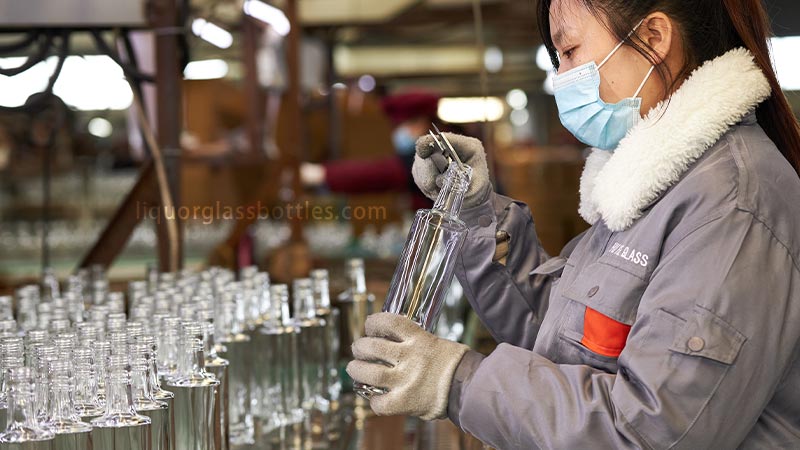
For international buyers, knowing how measurement units work can make a big difference when sourcing or developing glass bottles. Clear understanding ensures that your bottles, caps, and filling systems all fit perfectly — without costly surprises later.
First, it helps you select the right mold, closure, or cork for your product. For example, a bottle with a 28 mm neck finish needs a closure that matches that exact thread and diameter. Mixing up millimeters and milliliters could lead to parts that simply don't fit together.
Second, it prevents filling errors and volume mismatches. If the actual bottle capacity differs from your expected ml or oz size, your product labeling and filling line settings might both be off, leading to wasted liquid or packaging materials.
Third, using consistent units improves communication efficiency across borders. Manufacturers, designers, and buyers often work with CAD drawings or technical files — and keeping measurements in the same unit system (usually metric) avoids confusion between teams in different countries.
Pro Tip: Always double-check that both the bottle drawing and the closure specification use the same unit system before production. It's a small step that can save you from major manufacturing delays and costly corrections.
Getting the details right in packaging starts with understanding your measurements. Knowing the difference between M, mm, ml, mil, oz, and cc isn't just technical—it's practical. It helps you choose the correct bottle shape, match closures accurately, and communicate clearly with manufacturers worldwide.
By mastering these basic units, you can avoid production errors, reduce waste, and ensure your glass bottles meet both functional and branding requirements.
At Huihe Packaging, we work with global brands, distributors, and bottlers to design and produce glass packaging that fits perfectly—every time.
1. What's the difference between mm and ml in bottle packaging?
Millimeters (mm) measure length or diameter, while milliliters (ml) measure liquid volume. mm is for bottle size; ml is for how much liquid it holds.
2. Is cc the same as ml?
Yes. 1 cc = 1 ml. They are equal in volume. The term cc is more common in medical and cosmetic packaging, while ml is used for food and beverages.
3. What does 28/410 mean on a bottle neck?
It indicates a 28 mm neck diameter and a 410 thread type. This standard helps ensure caps and closures fit properly.
4. Why do some bottles use oz instead of ml?
Because oz (fluid ounces) is the standard unit in the U.S., while ml is used internationally. Both refer to volume, just in different measurement systems.
5. Can two bottles with the same capacity have different heights?
Absolutely. Bottle height depends on design, wall thickness, and bottom depth. Two 500 ml bottles can look completely different.
6. What's the best way to confirm bottle measurements before production?
Always check the technical drawing and closure specification. Make sure both use the same unit system (usually millimeters for size, milliliters for volume).
